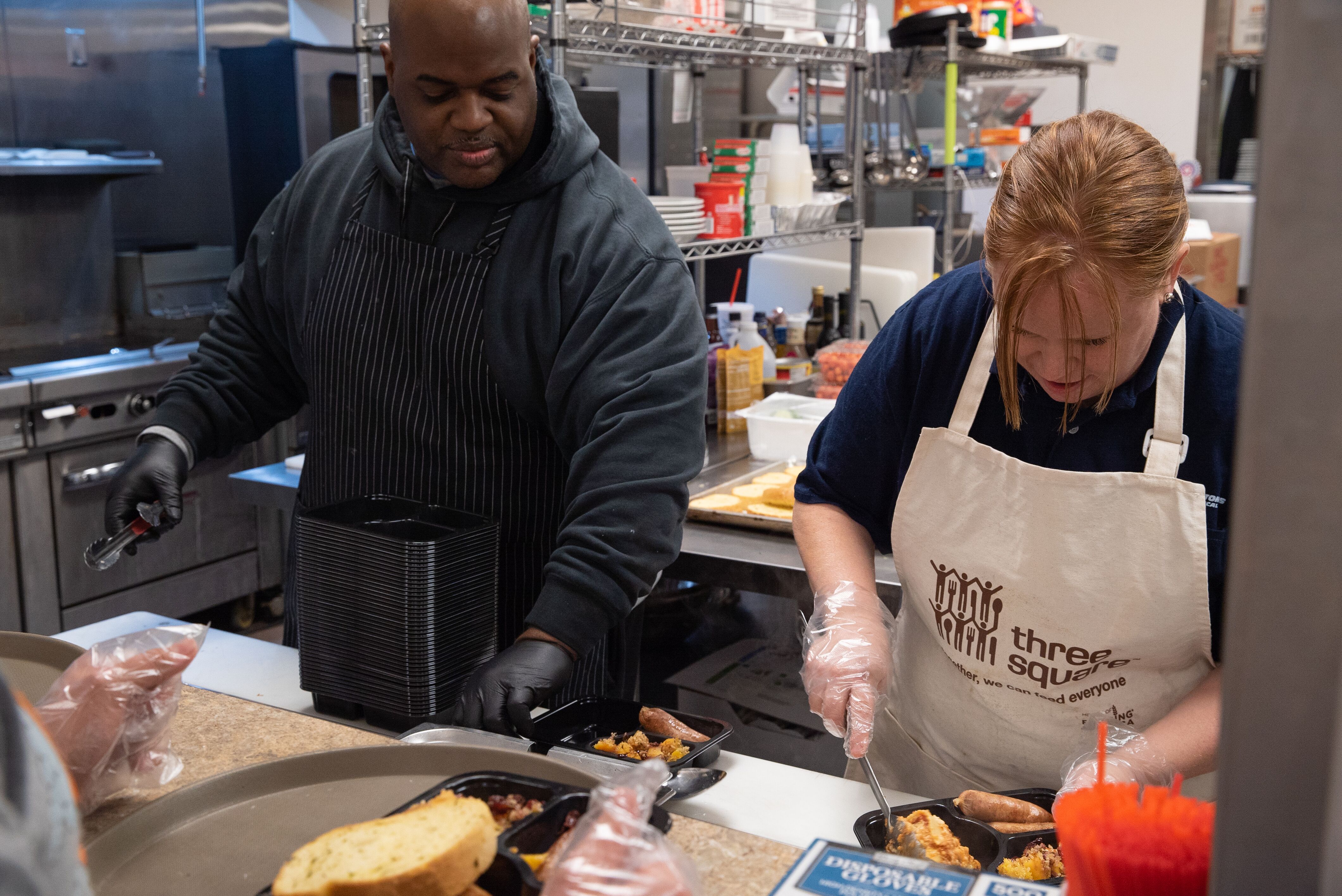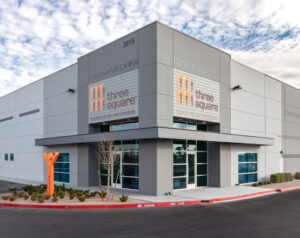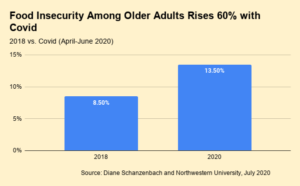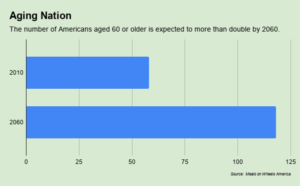About a year and a half ago, an anonymous donor handed Three Square Food Bank a windfall and a challenge: $10 million to end senior hunger in and around Las Vegas. Since then, the food bank has revamped its senior hunger program and begun laying the groundwork for systemic change in how it approaches the problem of hungry seniors.
Like many food banks, Three Square for years had been operating a “box program” that distributed commodity foods twice a month to people over 60. A deep dive into the program revealed that it missed the mark for many seniors, often giving them food that they couldn’t use or didn’t want.
That basic program has now been transformed. Three Square identified more than a dozen agency partners that were willing to make special accommodations for seniors, most importantly by organizing their pantries so seniors could choose the foods they would like to eat. These agencies also dedicated space or hours just for seniors and have extra volunteers on hand to help elderly clients with carrying bags or pushing carts. In exchange, the agencies get the food for free, with no shared maintenance fee.

Three Square is so far serving about 6,600 people through its new senior-focused “Golden Groceries” programs, and expects to get at least 10,000 seniors involved. “The response has been overwhelmingly positive because people get to choose what they want to eat,” said Lisa Segler, PhD, MPH, CHES, director of senior hunger programs at Three Square. “We’ve increased the quality and quantity of the food.”
The food bank also struck a partnership with the county hospital to identify food-insecure seniors, building upon evidence that shows good nutrition can keep discharged patients out of the hospital for 30 days or more. By asking two validated questions about food insecurity, the hospital identifies needy seniors and refers them to food programs. “It’s really helping us connect to unconnected people,” Segler said.
Another step Three Square took was to initiate weekly community dinners at a local Veterans of Foreign Wars site. The dinners, which served more than 1,000 people in their first two months, are designed to encourage people to slow down and socialize, not eat and run. Three Square plans to open two to five additional dinner sites around the area.
Perhaps the biggest barrier Three Square is facing in ending senior hunger is physically getting seniors to the pantries and feeding sites. Home deliveries are one solution, and volunteers from agency partners currently deliver groceries to 800 to 900 seniors every month. Three Square plans to assess the full scope of homebound seniors through a large, upcoming survey it will conduct with a local university.
Home deliveries, however, are difficult for pantries to sustain. Plus, they are not necessarily in seniors’ best interests, given the isolation and loneliness many face. “We would rather get seniors to the pantry to socialize and volunteer, versus assume that we want to keep everyone in their homes,” Segler said.
Among the creative solutions Three Square is considering is working with ride-share companies like Uber or Lyft, which already offer so-called concierge services. Third parties, like health care providers, for example, can arrange to have patients picked up and dropped off, without requiring patients to actually use an app. “We’re exploring all our options on transportation,” Segler said. “It’s such a large barrier. You can’t end senior hunger without addressing it.”
The need is pressing, based on surveys conducted by the food bank, which found that 30% of seniors going to its pantries experience depression and 48% are lonely. Segler noted that the Centers for Disease Control has identified isolation as deadlier than smoking or being sedentary. “There’s a lot of work to do on that side,” she said.
ABOVE: Preparing food for seniors at a VFW site.









